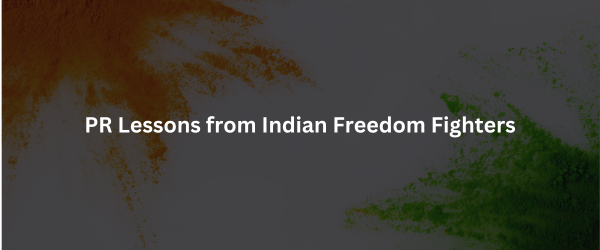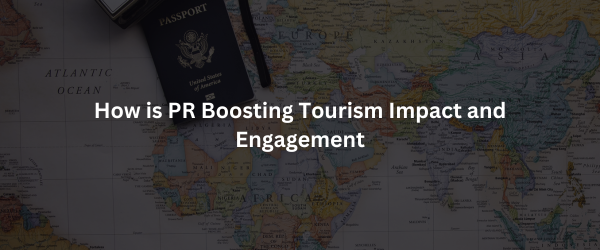
The Power of PR in Influencing the Mental Health Dialogue
August 11, 2023
The Evolving Role of PR Professionals in the Digital Age
August 22, 2023Public Relations (PR) as an art has long shaped the narrative of significant movements and events. As we commemorate India’s Independence Day, it’s worth delving into the world of PR through the lens of the country’s iconic freedom fighters. Their communication strategies offer timeless lessons for modern PR practitioners seeking to connect, inspire, and mobilize.
PR LESSONS: SHAPING INDEPENDENCE
The Art of Persuasion and Rhetoric
Indian freedom fighters, including Mahatma Gandhi, Jawaharlal Nehru, and Subhas Chandra Bose, were adept at using rhetoric to stir emotions and rally support. Their speeches and writings addressed the heart, inspiring collective action. In addition, the PR takeaway here is the skill of crafting compelling narratives that resonate with audiences on an emotional level.
Symbolism: A Visual Language of Unity
Icons like the Salt March, the spinning wheel, and the tricolor flag were more than symbols – they were potent PR tools. Visual communication transcends language barriers and delivers messages straight to the heart. For instance, in today’s PR landscape, effective visual elements carry the potential to spark unity and ignite movements.
Grassroots Connection and Community Mobilisation
The freedom fighters’ ability to connect with local communities fostered widespread support. Sardar Patel and Rajendra Prasad, for instance, championed community engagement, strengthening their PR campaigns. Similarly, this grassroots approach serves as a reminder that modern PR strategies should always embrace inclusivity and involve communities.
Nonviolent Communication and Civil Disobedience
The hallmark of India’s freedom movement was nonviolent communication. Gandhi’s Salt Satyagraha and Dandi March showcased civil disobedience’s power in garnering attention. In today’s world, ethical protest and activism remain essential PR tools for advocating change without resorting to aggression.
A Global Stage: Media and Diplomacy
India’s leaders understood the importance of international media and diplomacy. Nehru and Bose effectively leveraged global platforms for support. Similarly, modern PR professionals must embrace global outreach to expand their campaigns’ impact and reach.
Consistency and Resilience
Finally, Freedom fighters displayed remarkable consistency in messaging and an unwavering commitment to their cause. This consistency became their brand, leaving an enduring legacy. PR practitioners today must heed this lesson by maintaining brand consistency and persevering through challenges.
India’s journey to independence stands as a testament to the power of effective communication.
In conclusion, the PR strategies of its icons offer a treasure trove of wisdom for today’s practitioners. Crafting compelling narratives, embracing visual symbolism, engaging communities, advocating nonviolent action, and embracing the global stage are strategies. This remain as relevant in PR today as they were during India’s fight for freedom. As we celebrate Independence Day, let us not only honor our history but also learn from it to shape the future of PR.




